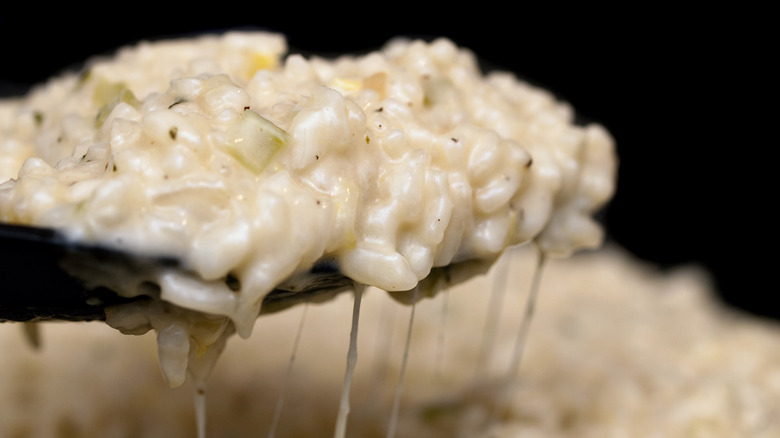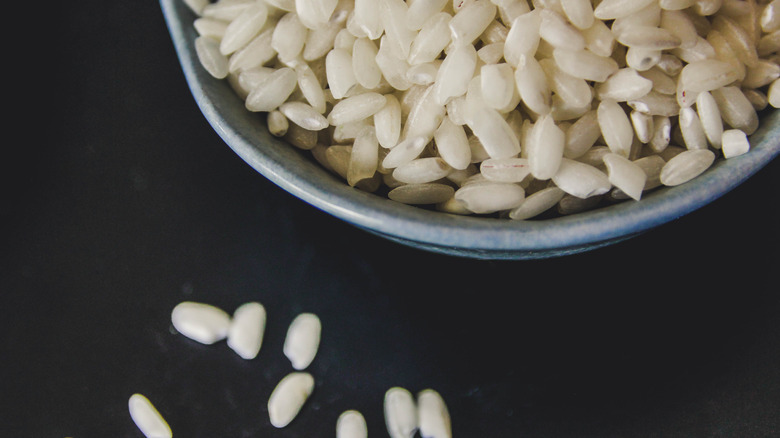The Science Behind Risotto's Uniquely Creamy Texture
It's a truth universally acknowledged that risotto is delicious to eat and tedious to make. The perfectionist's risotto recipe asks home cooks to monopolize multiple burners and spend an extensive amount of time standing at the stove, all in the name of achieving that meltingly rich consistency. But threading risotto's texture needle (you're looking for a toothsome bite with a creamy finish) actually depends on something you've likely never heard of — amylose.
We all remember from our food pyramid studies that rice is a starch, but as Food Crumbles notes, rice itself can actually vary in its starchiness. Every rice variety is made up of two unique starches in various proportions: amylose and amylopectin. The higher the ratio of amylopectin, the stickier the rice (like short-grain rice or sushi rice). The higher the ratio of amylose, the looser and lighter the rice (think long-grain rice like basmati). To create the platonic ideal of risotto, you're aiming for a balanced ratio between the two. For a dish that's creamy but not gluey and a forkful that's fluffy but holding itself together, aim for a rice with a moderate amount of amylose and a slightly higher proportion of amylopectin.
Tips and techniques to improve your risotto's texture
When it comes to risotto, arborio rice is your best bet. Arborio is a short-grain rice that has a high starch content thanks to skipping the extensive milling process that many other varieties go through. It also has a naturally high ratio of amylopectin. With more amylopectin, arborio rice is better prepared to soak up any liquid you throw at it. Speaking of soaking, there's also no need to rinse your arborio rice as even a quick wash will remove some of the starchiness you're looking for.
Now that you've got the right rice in hand, risotto requires one more peremptory step — toasting. You can add it to the pan dry, or heat butter or oil in a skillet and stir in your arborio rice until it's well coated. Toasting fortifies it against all that liquid you're going to add and ensures that it cooks evenly. This will prevent that dreaded mushy mouthfeel.
To further guarantee risotto's creamy texture, you simply must keep stirring consistently. Every few minutes, add a ladle full of the simmering liquid you've been keeping warm on the stove. The liquid will absorb as you stir and those now well-known starches will start reacting. By the time you've repeated the process about a dozen times, your rice will have undergone a delicious, velvety transformation, all thanks to the science of starches.

